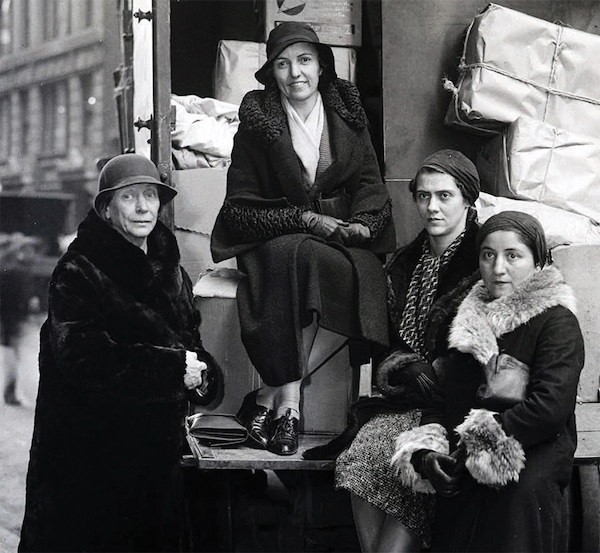In Time and the Town, her 1942 chronicle about Provincetown, Mary Heaton Vorse lovingly recounts her experience with this changeable “end of land” surrounded by sea. Far from quaint, this was a “serious town,” its inhabitants often imperiled by an ocean that also supplied tales of heroism, adventure, and wealth. Vorse would for most of her life call Provincetown home.
Vorse wrote her memoir during one of Provincetown’s many transformations, this one from a fishing town to a tourist town whose main business was pleasure. The “summer folk,” as she describes them, “spout” from boats at the shore, “choke” the roads with their cars, and “congregate” at the beach “like sand fleas on a dead fish.” But Vorse’s concern was not so much with the rise of the knickknack store and the proliferation of bars; it was, as with all of her writings, the changing conditions of labor.
Coincident with the tourism boom, and prompted in large part by the construction of the state highway, was the mechanization of the fish industry. As steam trawlers replaced small fishing boats, employment by corporation replaced employment by dory: one consequence was a rapid depletion of fish stocks, the other a decrease in wages for the fishermen.
Vorse’s interest in economic equality reveals itself in these passages. She senses a “current of unrest among Atlantic-coast fishermen”; she hears the younger generation’s interest in cooperation. And, perhaps most redolent of her writings elsewhere, she notes the workers beginning to question: a sign of their refusal to submit, passively, to worsening conditions.

Vorse lived in Provincetown with an eye turned out on the world. Her writings on labor, covering dozens of workers’ strikes across the country over several decades, reflect the fight for better working conditions by the most marginalized: women, children, African-Americans, new immigrants, and migrant workers. Vorse sought out those moments when people were forced from silence into speech and conscious action. Writing about the Passaic Strike in 1926, she describes a women’s meeting, organized in the wake of a violent attack on striking children by police: this was “no passive audience who sit like jugs and have the words of speakers poured into them.” These were active participants, a “live thing … thinking together and getting ready to act together.” The marriage of thought and action was, for Vorse, a precondition for political change.
It is perhaps from these salient moments that those living now have the most to learn from Mary Heaton Vorse. Politics does not begin with the political party and its failed promises (a given) but, rather, in the tremors of dissatisfaction and collective dissent.
Readers of Vorse may also learn what to guard against. Writing during and after two world wars, Vorse knew the meaning of a nation in recovery; nationalist rhetoric would have been close at hand. Perhaps for this reason she sounds, at times, a triumphant note otherwise missing from her writings on the laboring class.
Nowhere is this triumphalism more obvious than in her 1922 article in The Nation on “The Children’s Crusade for Amnesty,” in which she describes a group of women and children, petition in hand, marching across the country to demand amnesty for their fathers, husbands, and sons. At the very end of the piece, she presents the reader with the harrowing legend of the Angel of Justice. The Angel holds a cup that, over time, is filled with children’s tears. As the cup overflows, the tears mark a spot in which a magic tree will grow. On this tree, a gallows will form “on which to hang the tyrant who caused the tears.” Alongside her other writings, her reading of the Angel is clear: nothing in the march of history, not even history’s most violent repressions, has “ever stopped an idea.” Justice will prevail and it will do so violently, swiftly, in an act as definitive as an execution.
There is a risk, in this image, of reducing politics to a colossal act. There is equally a risk of reducing oppression to a single tyrant whose removal would bring instant change. Executions, historically, have always drawn a crowd. But this is not the crowd described by Vorse elsewhere as a “live thing,” coming together to act and think; this is a crowd drawn by spectacle, a passive “jug” into which words and ideas are poured.
In the writing of history, the politics of spectacle holds the upper hand. The grandiose gesture reverberates across centuries while the minor voices require more effort to hear. At times drawn in by History and Justice in the triumphant sense, Vorse also knew a stronger power in setting this Angel aside: in grounding herself locally and listening for the smallest voice. Let us begin with her, there.
Josephine Boyle is a writer living in Montreal.



